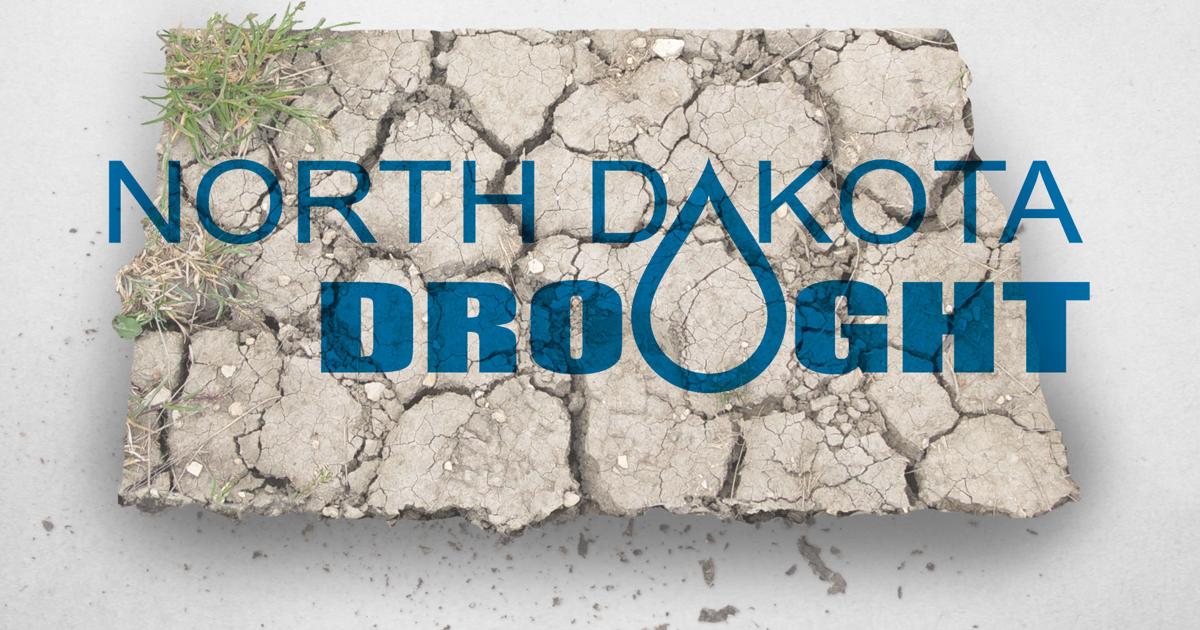A moderate drought has resurfaced in western North Dakota after ending four months ago following a wet spring.
Heat and low rainfall this summer have led to the re-emergence of abnormally dry conditions in many parts of the state – including southern parts of Burleigh and Morton counties – with pockets of moderate drought in the southeast and now northwest. The latest US Drought Monitor map, released Thursday, shows more than 26% of the state as abnormally dry, with 2% moderately dry.
This compares to no areas of moderate drought three months ago and less than 7% abnormally dry.
National Weather Service data shows Bismarck received 1.2 inches of rain last month – less than half the norm – ranking it about mid-pack for drought in August over the past 1 ½ centuries . It was the city’s seventh hottest August since 1874, with the average temperature 4 degrees above normal. For Dickinson, it was the 11th hottest.
People also read…
“Drought conditions have intensified in the central and northern plains regions with additional downgrades on this week’s map,” David Simeral, associate researcher at the Western Regional Climate Center, wrote in this week’s report. “In these areas, recent drought impact reports submitted to the National Drought Mitigation Center have indicated drought-related impacts in the agricultural sector, including reduced crop yields as well as deterioration pasture and range conditions.”
Crop Report
Soil moisture in North Dakota continues to decline as crops mature, according to this week’s crop report from the National Agricultural Statistics Service. It rates 52% of topsoil moisture and 60% of subsoil moisture as adequate to excess, up from 60% and 67% last week. At the start of the summer, the percentages were 94% and 93% respectively.
Pasture and range conditions statewide are rated as good to excellent at 53%, down from 62% a week ago and 81% at the start of summer. Inventory water supplies are rated at 78% adequate to surplus, stable for a week but down from 96% in mid-June.
However, the majority of almost all crops remain in the good or excellent categories. Last week’s dry weather also helped farmers in the field.
North Dakota’s spring wheat harvest is nearly two-thirds complete, up from one-third a week ago. Harvesting of this year’s winter wheat is complete and planting of next year’s crop is underway, 7% complete. Winter wheat is sown in the fall, goes dormant over the winter, and reappears in the spring.
Weekend weather
The Weather Service’s weekend forecast for western and central North Dakota points to cool conditions after an unusually warm start to the week caused by extreme heat that blanketed the western United States. It set high temperature records in some states, but not in North Dakota, despite temperatures flirting with 100 degrees.
A crossing cold front will replace the sweltering western air with cooler Canadian air. Friday, Saturday and Sunday highs in western and central North Dakota are forecast in the 60s and 70s, with lows in the 40s and possibly even the 30s. Freezing could be possible in parts from the extreme southwest late Saturday and early Sunday.
“The powerful cold front will bring well below average temperatures to the northern and central plains on Friday and Saturday,” the weather service said.
Normal for Bismarck at this time of year is a high of 76 and an overnight low of 49. The forecast for Friday and Saturday is for highs in the upper 60s and lower 70s, with lows in the mid 40.




